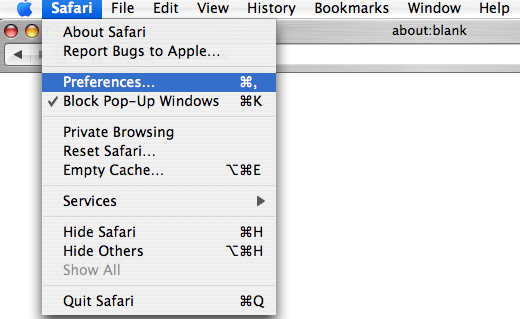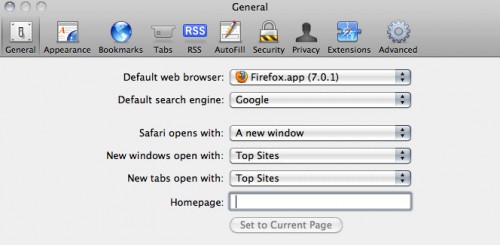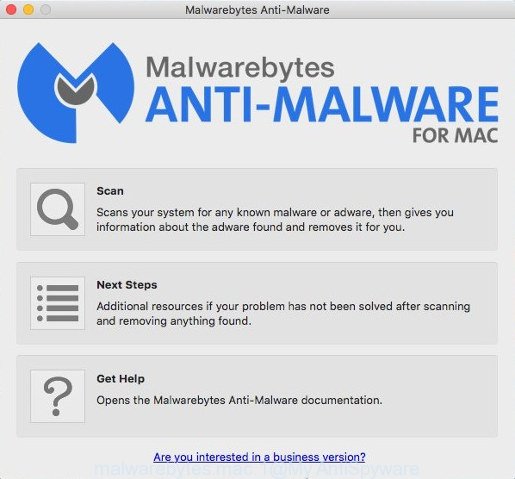SearchArchive is a PUP (potentially unwanted program) that belongs to the Adware family. Adware – What Is It? Adware is considered by many to be synonymous with ‘malicious software’. It is a malicious program which serves unwanted ads to computer users. Some examples include pop-up ads, push notifications or unclosable windows. Adware can be installed onto your MAC OS via infected web sites, when you open email attachments, anytime you download and install free programs.

Unwanted ads
Another reason why you need to remove adware is its online data-tracking activity. Adware software can install a component which enables its creator to track which web pages you visit, which products you look at upon those pages. They are then able to choose the type of ads they show you. So, if you had adware on your machine, there is a good chance you have another that is gathering and sharing your confidential information with third parties, without your consent.
You probably want to know how to delete SearchArchive as well as get rid of unwanted ads. In the step-by-step guide below we will tell you about how to solve your issues.
How does SearchArchive get on your MAC OS
The majority of adware software spreads bundled with freeware or even paid software that Internet users can easily download online. The setup packages of such apps, most commonly, clearly indicate that they will install bundled software. The option is given to users to block the install of any third-party apps. So, in order to avoid the setup of any adware: read all disclaimers and install screens very carefully, select only Custom or Advanced install type and uncheck all optional programs in which you are unsure.
Threat Summary
| Name | SearchArchive, Search Archive 1.0 app |
| Type | adware, potentially unwanted application (PUA), popup virus, pop ups, pop up ads |
| Symptoms |
|
| Removal | SearchArchive removal guide |
How to Remove SearchArchive adware software
We can help you get rid of SearchArchive ads from your browsers, without the need to take your Apple Mac to a professional. Simply follow the removal tutorial below if you currently have the intrusive adware on your MAC system and want to get rid of it. If you have any difficulty while trying to remove the SearchArchive adware, feel free to ask for our help in the comment section below. Some of the steps will require you to reboot your machine or shut down this web page. So, read this guide carefully, then bookmark this page or open it on your smartphone for later reference.
To remove SearchArchive, use the following steps:
- How to remove SearchArchive adware software without any software
- Automatic Removal of SearchArchive adware
- How to stay safe online
- To sum up
How to remove SearchArchive adware software without any software
Looking for a solution to remove SearchArchive adware manually without downloading any applications? Then this section of the post is just for you. Below are some simple steps you can take. Performing these steps requires basic knowledge of browser and Windows setup. If you doubt that you can follow them, it is better to use free apps listed below that can allow you get rid of SearchArchive ads.
Delete adware through the Finder
Check out the Finder (Applications section) to see all installed software. If you see any unknown and questionable programs, they are the ones you need to delete.
Open Finder and click “Applications”.

Carefully browse through the list of installed applications and remove all questionable and unknown applications.
Once you have found anything questionable that may be the SearchArchive or other PUP, then right click this program and select “Move to Trash”. Once complete, Empty Trash.
Remove SearchArchive from Mozilla Firefox by resetting web-browser settings
The Firefox reset will remove the SearchArchive ads, modified preferences, extensions and security settings. Essential information like bookmarks, browsing history, passwords, cookies, auto-fill data and personal dictionaries will not be removed.
First, open the Firefox and press ![]() button. It will display the drop-down menu on the right-part of the internet browser. Further, click the Help button (
button. It will display the drop-down menu on the right-part of the internet browser. Further, click the Help button (![]() ) as displayed on the screen below.
) as displayed on the screen below.

In the Help menu, select the “Troubleshooting Information” option. Another way to open the “Troubleshooting Information” screen – type “about:support” in the browser adress bar and press Enter. It will open the “Troubleshooting Information” page as displayed in the following example. In the upper-right corner of this screen, click the “Refresh Firefox” button.

It will open the confirmation prompt. Further, press the “Refresh Firefox” button. The Firefox will start a process to fix your problems that caused by the SearchArchive adware software. After, it is done, click the “Finish” button.
Remove SearchArchive from Google Chrome
Annoying SearchArchive ads or other symptom of having adware software in your web browser is a good reason to reset Google Chrome. This is an easy method to restore the Chrome settings and not lose any important information.

- First start the Google Chrome and click Menu button (small button in the form of three dots).
- It will display the Chrome main menu. Choose More Tools, then click Extensions.
- You’ll see the list of installed extensions. If the list has the extension labeled with “Installed by enterprise policy” or “Installed by your administrator”, then complete the following instructions: Remove Chrome extensions installed by enterprise policy.
- Now open the Chrome menu once again, click the “Settings” menu.
- You will see the Chrome’s settings page. Scroll down and click “Advanced” link.
- Scroll down again and press the “Reset” button.
- The Google Chrome will show the reset profile settings page as shown on the image above.
- Next click the “Reset” button.
- Once this task is finished, your web browser’s search provider by default, newtab page and startpage will be restored to their original defaults.
- To learn more, read the post How to reset Google Chrome settings to default.
Get rid of SearchArchive adware software from Safari
The Safari reset is great if your internet browser is hijacked by SearchArchive or you have unwanted add-ons or toolbars on your internet browser, that installed by an malicious software.
Run Safari internet browser. Next, select Preferences from the Safari menu.

First, click the “Security” tab. Here, select “Block pop-up windows”. It will block some types of pop-ups.
Now, click the “Extensions” icon. Look for questionable extensions on left panel, choose it, then click the “Uninstall” button. Most important to get rid of all dubious extensions from Safari.
Once complete, check your start page and search provider settings. Click “General” tab. Make sure that the “Homepage” field contains the website you want or is empty.

Make sure that the “Search engine” setting shows your preferred search provider. In some versions of Safari, this setting is in the “Search” tab.
Automatic Removal of SearchArchive adware
Using a malware removal utility to look for and remove adware software hiding on your MAC system is probably the simplest way to get rid of the SearchArchive adware. We suggests the MalwareBytes Anti-Malware (MBAM) tool for Mac MACs. It is the anti malware program for Mac OS that offers a free malware removal.
Use MalwareBytes Free to get rid of SearchArchive adware
If you are still having problems with the SearchArchive adware removal or just wish to scan your Apple Mac occasionally for adware and other malware, then download MalwareBytes. It’s free for home use, and scans for and deletes various unwanted programs that attacks your MAC OS or degrades MAC OS performance. MalwareBytes Free can remove browser hijacker infection, adware, potentially unwanted apps as well as malware, including ransomware and trojans.
Visit the page linked below to download MalwareBytes Anti Malware (MBAM).
20945 downloads
Author: Malwarebytes
Category: Security tools
Update: September 10, 2020
When the download is done, close all software and windows on your MAC. Run the saved file. Follow the prompts.
The MalwareBytes Anti-Malware (MBAM) will automatically start and you can see its main screen like below.

Now press the “Scan” button . MalwareBytes Anti Malware program will scan through the whole machine for the SearchArchive adware. Depending on your Apple Mac, the scan may take anywhere from a few minutes to close to an hour. While the MalwareBytes tool is checking, you can see count of objects it has identified as being infected by malware.

As the scanning ends, the results are displayed in the scan report. All found items will be marked. You can remove them all by simply press “Remove Selected Items” button. The MalwareBytes will remove SearchArchive and move the selected threats to the program’s quarantine.
How to stay safe online
Run an ad-blocking tool like AdGuard will protect you from harmful advertisements and content. Moreover, you can find that the AdGuard have an option to protect your privacy and stop phishing and spam web sites. Additionally, ad blocking programs will help you to avoid annoying popup advertisements and unverified links that also a good way to stay safe online.

- Download AdGuard by clicking on the following link.
AdGuard for Mac download
3753 downloads
Author: © Adguard
Category: Security tools
Update: January 17, 2018
- Once downloading is complete, start the downloaded file. You will see the “Setup Wizard” program window. Follow the prompts.
- Once the installation is finished, click “Skip” to close the setup program and use the default settings, or press “Get Started” to see an quick tutorial which will help you get to know AdGuard better.
- In most cases, the default settings are enough and you do not need to change anything. Each time, when you run your machine, AdGuard will launch automatically and stop unwanted ads, block harmful and misleading web-pages.
To sum up
Once you’ve complete the few simple steps shown above, your computer should be free from the SearchArchive adware and other malicious software. The Safari, Mozilla Firefox and Chrome will no longer display unwanted ads. Unfortunately, if the step-by-step instructions does not help you, then you have caught a new adware, and then the best way – ask for help here.

















